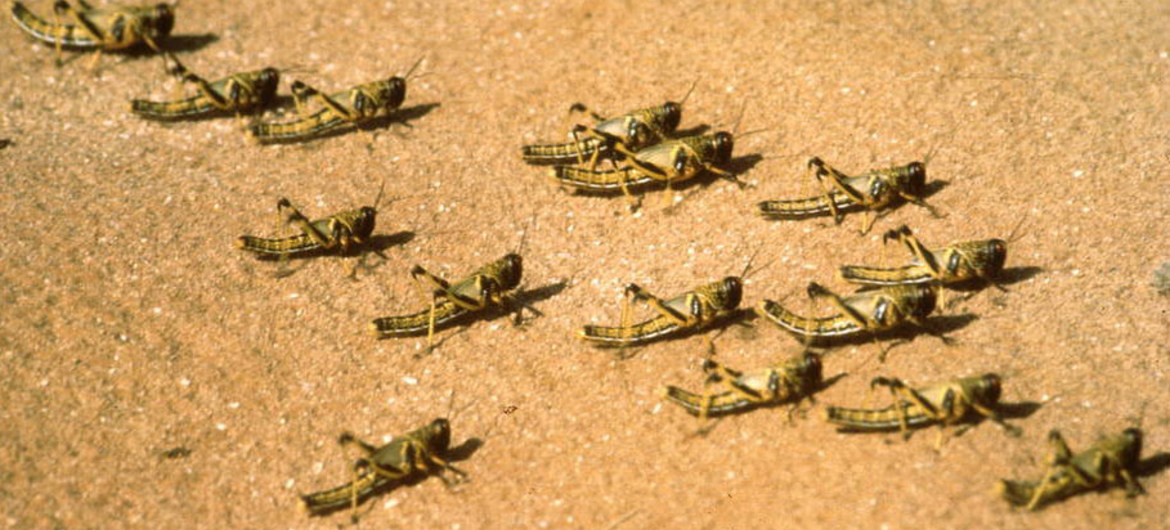The United Nations Food and Agriculture Organisation (FAO) has issued a warning to Kenyan Government stating that Isiolo and Samburu counties have become the new epicentres of the second wave of desert locusts.
The current situation continues to represent an unprecedented threat to food security and livelihoods in East Africa. In addition, the Indo-Pakistan border area, Sudan, and perhaps the Sahel of West Africa face an impending invasion from spring breeding areas.
EAST AFRICA
On Saturday, FAO released a locust watch stating that immature and mature swarms in northern Kenya and southern Ethiopia are still present where they are maturing and laying eggs.
“In northern Kenya and southern Ethiopia, immature and mature swarms are still present where they are maturing and laying eggs.
In Kenya, a few more hopper bands have been reported in the northern county of Marsabit but the majority of hatching has yet to occur or be detected.
In Ethiopia, some swarms have spread out to other areas of the country, mainly in the east, including the Somali region and the Ogaden where breeding is underway and hopper bands have formed.
In Somalia, breeding is in progress in the northwest and, in the past few days, in the northeast that could eventually cause groups and swarms to form. While control operations continue, more surveys are required in all three countries.” FAO said in a statement.
Agriculture PS Hamadi Boga says the ongoing control operations have led to a decrease in the locust swarm population in parts of Isiolo, and the winds have begun migrating the swarms to Turkana.
“A few more hopper bands have been reported in the northern county of Marsabit, but the majority of hatching has yet to occur or be detected,” the locust watch states.
However, 18 counties are affected by the locust invasion in the country. The government has issued up to Sh540 million for locust control and with more support from FAO, the World Bank and other donor partners. There are sufficient supplies to contain the menace in the next three months.
FAO has proved that the locust menace is spreading to new areas and that Sudan, and perhaps the Sahel of West Africa, could face an impending invasion from spring breeding areas.
“The swarms would first appear in Sudan where it is currently dry and the situation is calm. If they arrive in Sudan before the summer rains, then the swarms are likely to continue westwards across the Sahel from Chad to Mauritania,” FAO warns.
“Besides, the update shows that the first appearance in eastern Chad could be as early as the second week of June from Arabia and the last week of June from East Africa. While the current threat is assessed as low, it can change significantly during this month due to rainfall, winds, and spring breeding in Arabia and East Africa,” FAO states.
In February this year, Food and Agriculture Organisation warned Kenya over new generation locusts. The body said due to climate change the locust invasion war could triple by May.
FAO claimed that by June 2020, swarms of locusts will multiply by five hundred times. Due to incoming cyclones heading towards the East of Africa and Asia, locusts breeding ground will be favourable hence increasing the calamity.
“We are approaching long rains in East-Africa. We got the data from the international meteorological department in the World Meteorological Organization which shows the cyclone movements, ” said FAO Director-General Mr QU Dongyu.
It is said a desert locust lifespan ranges from 3-5 Months. They female locusts lay eggs on the soil. The number ranges from 25-50 eggs where 80% of eggs laid hatch for new generation locusts.
“While female locusts are laying eggs and have their abdomen poked into the soil they do not disturb and fly away as rapidly as normal. After laying, the pod is sealed with a frothy plug to protect the eggs from desiccation. Each female lays pods of about 25-50 eggs, sometimes laying only one pod per lifetime, ” an official from Desert Locust Control Organisation for Eastern Africa (DLCO-EA) said.
The Desert Locust Control Organisation for Eastern Africa (DLCO-EA) covers Uganda, Kenya, Tanzania, Ethiopia, Sudan, South Sudan, Eritrea, Somalia, and Djibouti.
In March, Agriculture Cabinet Secretary Peter Munya allayed fears of an imminent food insecurity threat due to ravaging locusts saying a sizeable portion of swarms was composed of egg-laying locusts which are less destructive.
“Some of these swarms are in that stage of laying eggs and are very inactive in terms of feeding, and therefore not destructive like the younger swarms,” said Munya.
Munya’s comments which mirrored remarks he made in February come at a time of heightened concern on locust-control measures employed by the government with swarms having so far been detected in at least 22 counties.
He said the department of crops has so far used Sh230 million in fighting locusts. The CS added an additional Sh300 million in the locust-eradication campaign.
Munya projected the eradication of the swarms by June 2020.
























